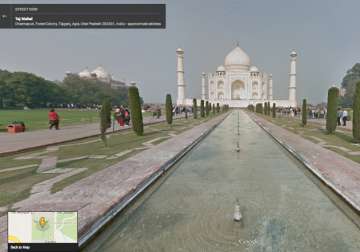New Delhi: The Ministry of Home Affairs (MHA) has conveyed to American tech giant Google its denial for its plans to put Indian cities, tourists spots, hills and rivers in an application that would enable their exploration through 360-degree, panoramic and street-level imagery.
The government cited lack of a regulatory mechanism behind its decision to decline Google’s 3D Street View.
The company can, however, approach the government once again after the proposed Geospatial Information Regulation Bill, 2016, is passed by the Parliament and became a law.
Google had asked the government’s permission to allow 3D panoramic views streets of major cities and tourists spot.
Official sources said the rejection came after a detailed analysis by security agencies and defence forces which feel that allowing Google to cover India would compromise country's security interest.
MoS for Home Kiren Rijiju said that once the proposed Geospatial Information Regulation Bill, 2016 comes into force, issues related to internet-based application would be resolved.
The internet services giant wanted to cover most of the Indian territory through the Google Street View. It explores places around the world through 360-degree, panoramic and street-level 3D imagery. Everything taken under it posted online.
It has been extensively used in the United States, Canada and many European countries, its applications in India was initially permitted for a few location.
Google had on an experimental basis launched Street View in some of the tourist sites like Taj Mahal, Red Fort, Qutub Minar, Varanasi river bank, Nalanda University, Mysore Palace, Thanjavur temple Chinnaswamy stadium besides others in partnership with the Archaeological Society of India.
Google Street View is a technology featured in Google Maps and Google Earth that provides panoramic views from positions along many streets in the world.
It was launched in 2007 in several cities in the US and has since expanded to include cities and rural areas worldwide.
Streets with Street View imagery available are shown as blue lines on Google Maps. It displays panoramas of stitched images. Most photography is done by car, but some is done by trekker, tricycle, walking, boat, snowmobile, camel, and underwater apparatus.
With PTI Inputs
Latest Business News
